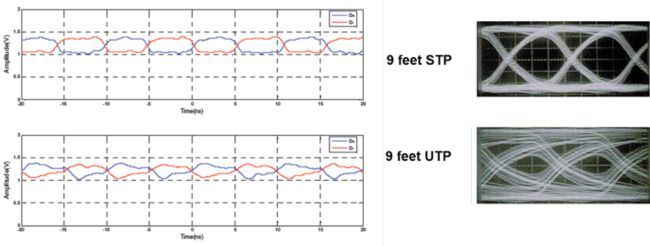-
Products
+
-
Products
- New Products
- AV over IP Solutions
- Unified Communication & Collaboration Solutions
- Digital Video Processing Solutions
- Control Systems & Software
- Matrix Switchers
- HDMI Switchers
- HDMI Distribution Amplifiers
- Wireless AV Solutions
- HDMI over CAT6 Extenders
- HDMI Fixers & Boosters
- HDMI Cables
- Active Optical HDMI Fiber Cables
- Audio Solutions
- Accessories
-
Key Digital AV Over IP Systems
- AV Over IP Systems Overview
- AV Over IP Products
- DIY AV Over IP Systems
- Control Apps and Software
-
-
Markets & Solutions
+
- KD University
-
Resources
+
-
Press Resources
- Press Releases
- Key Digital in the News
- Hires Artwork
-
Sales Resources
- Market Case Studies
- Video Resources
- Sales & Tech Presentations
-
- About Us +
- Contact +
Making Long HDMI Cables
By Mike Tsinberg - June 2015
Making long HDMI cables is not a trivial task. Sending heavy up to 18 Gb/s Video/Audio load one way inside that cable is done by TMDS (Transition Minimized Differential Coding) signal. By HDMI specifications, that signal has to travel via four twisted pairs that are similar to CAT5/6 cable. Twisted pair cabling is the most difficult cable to use for fast digital data. There are two flavors of twisted pair – UTP (Unshielded Twisted Pair) and STP (Shielded Twisted Pair).
We conducted a few experiments and it was clear that STP is far superior cable for many reasons:
- STP Blocks unwanted interference from the outside of the cable. Such interference can create "sparkling" on Video.
- It improves cable bandwidth linearity. That in turn improves edges of the data that decreases edge "jitter" per picture below.
- Unification of the ground between Tx and Rx. For long cable runs ground can be substantially different and floating. That increases accuracy of data decoding and reduce errors
The STP cable can be with two flavors as well: one general shield around all four twisted pairs and second with individually shielded twisted pairs as well. Shielded individual pair is better than not shielded in the STP cable. It effectively blocks interference from inside the cable generated by pair to pair interference.
Example below shows difference of edge linearity on a short run of STP versus UTP:

Based on this evidence ALL Key Digital HDMI cables are using STP with individual shielded twisted pairs for transporting TMDS.
However, when cable lengths reach 30 feet or longer good shields and good cable materials are not enough. The edge "jitter" destroys edges and close many of the cable "eye" in process thereby dropping useful data rate on the receiving end. The only way to recover this data is to use active Equalization circuits (EQ). The active RedMere EQ circuit is installed on the Rx End of the long HDMI cable. It's a very low power device that is using a very small amount of 5V power available inside HDMI cable.
Rx Cable End:

On the diagram below you can see a principle operation of active HDMI cable that is assisted by EQ circuit on the Rx end of the cable:

To achieve reliable 4K UHD operation over very long distances of 30 feet or larger, Key Digital cables employ STP with individual shielding twisted pair technology inside with state-of-the-art RedMere EQ assisted technology to re-open the 'eye" and decrease "jitter" twisted pair cables effects .
Learn More About Enterprise AV™ over IP Solution
Discover Key Digital HDMI over IP solutions.







